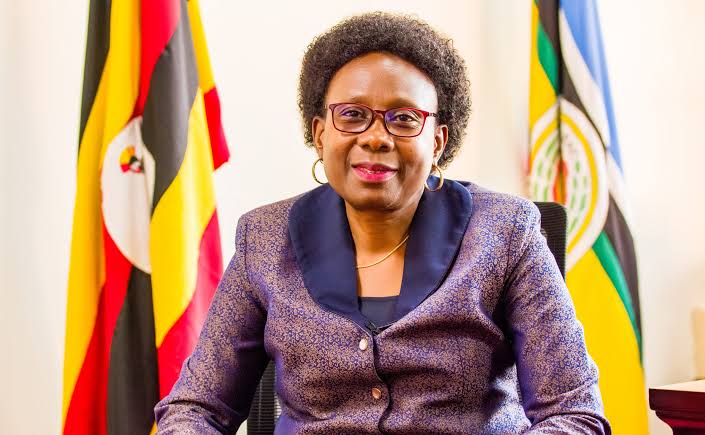Uganda has officially declared the end of its latest Ebola Sudan Virus Disease (SVD) outbreak, a significant milestone in the country’s fight against infectious diseases.
The Ministry of Health announced the victory on April 26, 2025, through a post on its official X account, confirming 42 consecutive days without a new case since the last confirmed patient was discharged on March 14, 2025.
The outbreak, which began in late January, recorded 14 cases across seven districts and three cities, resulting in 10 recoveries and two deaths.
“The current Ebola Sudan Virus Disease outbreak has officially come to an end,” the Ministry stated. “Our appreciation to our health workers, partners, and communities for their support in ending this outbreak.”
The announcement sparked widespread relief, with groups like UNICEF Uganda and the Uganda Red Cross Society lauding the collective efforts that halted the virus’s spread.
Rapid Response to a Deadly Threat
The outbreak was confirmed on January 30, 2025, after a 32-year-old male nurse died at Mulago National Referral Hospital in Kampala, Uganda’s primary Ebola treatment center.
The Sudan strain, notorious for its high mortality rate and lack of an approved vaccine, posed a formidable challenge, especially in Kampala, a bustling city of about 4 million and a regional hub linked to eastern Congo, Kenya, Rwanda, and South Sudan.
The Ministry of Health, supported by the World Health Organization (WHO), Africa Centres for Disease Control and Prevention (Africa CDC), and other partners, mounted an immediate response.
Key strategies included early case detection, rigorous contact tracing, quarantine measures, enhanced clinical care, and robust infection prevention protocols.
Within days, the Ministry launched a trial vaccination campaign using a candidate vaccine from the International AIDS Vaccine Initiative (IAVI).
By early March, 264 contacts had been vaccinated, and 2,000 doses of the antiviral drug remdesivir were deployed to bolster treatment.
Surveillance efforts were intensified, with 288 contacts initially quarantined in Kampala.
Community engagement was pivotal, with health officials educating residents on SVD transmission, which occurs through contact with infected bodily fluids or tissues.
Symptoms include fever, vomiting, diarrhea, and, in severe cases, uncontrolled bleeding.
Overcoming Obstacles
This was Uganda’s sixth Sudan strain outbreak and ninth Ebola epidemic since 2000, testing the nation’s public health resilience.
The lack of an approved vaccine for the Sudan strain and the outbreak’s urban emergence in Kampala raised fears of rapid spread.
Compounding the challenge, U.S. foreign aid cuts, including a USAID funding freeze, limited resources, forcing Uganda to lean heavily on local capacity and international support from organizations like the WHO and UNICEF.
Drawing on its extensive experience with Ebola, Uganda responded decisively. The country’s tropical forests, natural reservoirs for the virus, make outbreaks a persistent threat, but Uganda has honed its ability to act swiftly.
“The 42-day countdown from the last recovered case confirms the outbreak’s end,” noted journalist Walter Mwesigye from Mbale, underscoring the stringent criteria met.
Dr. Charles Olaro, Director of Health Services, highlighted contact tracing as a cornerstone of containment.
“It’s the key to stopping Ebola’s spread,” he told the Associated Press in March, noting that despite early losses, including a nurse and a 4-year-old child, the situation was quickly stabilized.
A Remarkably Low Death Toll
Unlike previous outbreaks, where the Sudan strain’s fatality rate often reached 40-47%, this epidemic saw a significantly lower mortality rate.
Of the 14 confirmed and probable cases, 10 patients recovered, reflecting advancements in clinical care and timely interventions.
The WHO praised this outcome, given the strain’s severity and the absence of a licensed vaccine.
The outbreak’s containment has prompted calls to bolster Uganda’s preparedness for future health crises.
Dr. Richard Kabanda, Commissioner for Health Promotion and Education, acknowledged public exhaustion from recurring epidemics, including COVID-19, anthrax, Marburg, and Mpox.
He urged sustained vigilance, citing Uganda’s proximity to epidemic-prone neighbors like the Democratic Republic of Congo and South Sudan.
A Shared Success
The end of the outbreak is a testament to collaborative efforts. The Uganda Red Cross Society, alongside UNICEF Uganda and the International Federation of Red Cross and Red Crescent Societies (IFRC), supported community outreach and resource mobilization.
“We celebrate Uganda’s resilience,” UNICEF Uganda posted on X, thanking health workers and communities.
Global media, including Reuters and The Star, covered the declaration, noting Uganda’s ability to curb the outbreak swiftly despite significant hurdles.
Preparing for the Future
With the outbreak behind it, Uganda is focused on sustaining its defenses. The Ministry of Health adhered to International Health Regulations, declaring the outbreak within three hours of lab confirmation, setting a proactive tone.
The 42-day period—twice the virus’s maximum incubation time—ensured no hidden cases remained.
Moving forward, officials are prioritizing ongoing surveillance and public education to prevent recurrence.
The trial vaccination program and research into monoclonal antibody treatments signal progress toward better tools against the Sudan strain.
For now, Uganda celebrates a hard-fought victory, with the Ministry extending gratitude to frontline health workers, global partners, and communities whose unity turned the tide.

